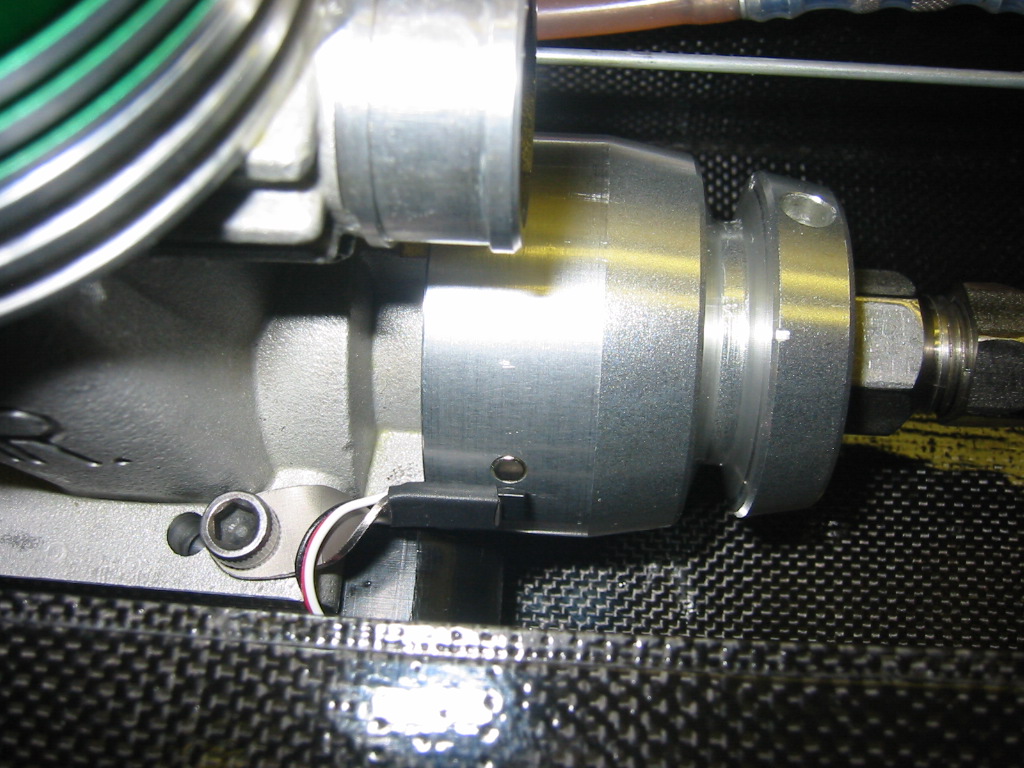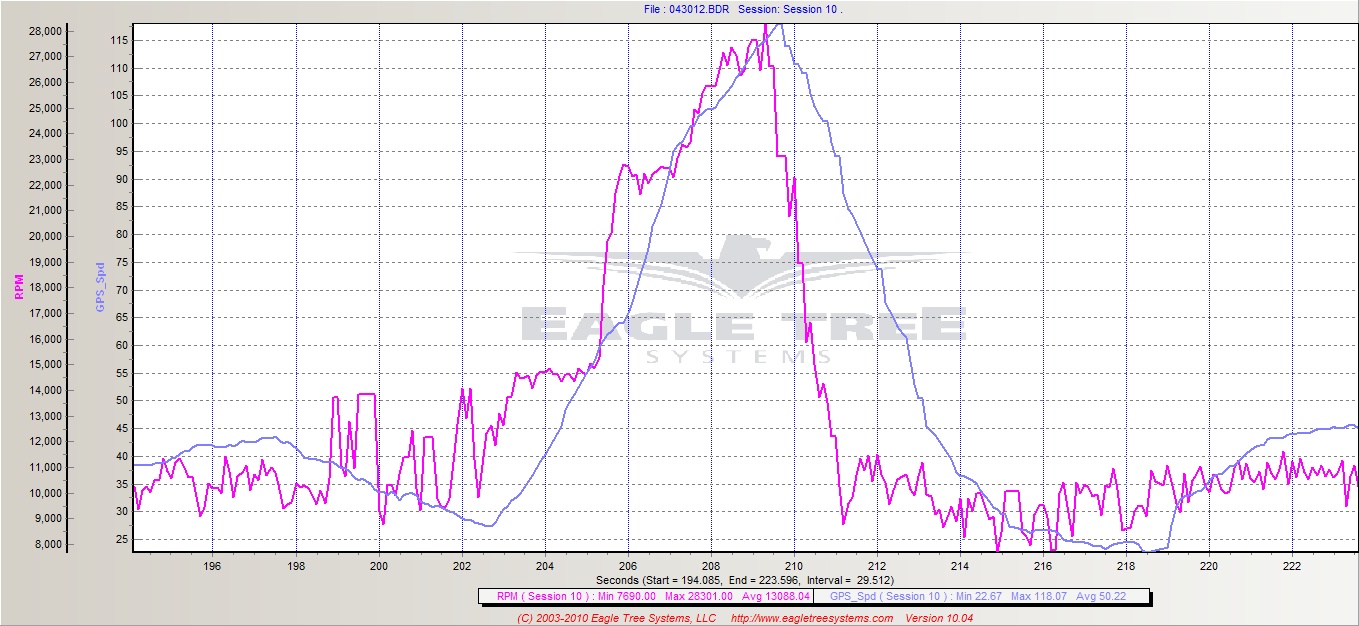- Joined
- Sep 7, 2011
- Messages
- 2,382
cool looking outrigger stand there

cool looking outrigger stand there
See comment #44Here is a link to a PDF version of the Jennings book for others that want to dabble.
http://www.amrca.com/tech/tuners.pdf
The calculations aren't expensive, although complex in the field of thermodynamics.It's not expensive these days to do the thermodynamic calculations in a two stroke (or a four stroke) engine. Scavenging is a lot tougher problem and requires a full 3D model with a computational flow program. It has been done, though. The model most people I know use is one dimensional. It works very well for pipe and port design using empirical models for scavenging and combustion. The program is EngMod2T costing around $400 and comes with forever updating. It is based on Gordon Blair's work outlined in "The Design and Simulation of Two-Stroke Engines" mentioned above. EngMod has been improved over the years with inputs from around the world by the best two stroke tuners. It also contains great versions of the empirical pipe design and time area programs that were used for years.
I can't recommend using it if you aren't very serious about engine design. The available commercial pipes are very good. All you need to do is tweak your port timing and pipe length to get the best performance from the hull and propeller you are running. That's not trivial, though. LOL
Lohring Miller
Missed that one. LOLSee comment #44
Tim,
No problem on the logger questions. Be glad to help.
I do not use the real time telemetry. Instead after a run I download the data from the logger to a laptop. I then import the data file into an Excel spreadsheet that is more customized/easier to view than what Eagle Tree offers. I do not use the real time telemetry because it is too hard to watch the boat plus look down at a screen.
For the engine rpm sensing, I use two magnets 180 degrees apart pressed into the engine's flywheel. With two magnets there are no balance issues. The magnets are pressed into a hole/pocket in the flywheel that is 0.125" dia x 0.067 deep. I use a small centerpunch to peen the edges of the holes in two places to "squish" the edges of the hole. This locks the magnets in place to prevent them from flying out. The rpm sensor is a hall effect senor. It is mounted in an aluminum bracket that is attached to the engine rail. The photo attached shows one of the flywheel magnets and the sensor mount.
For cylinder head temp, I use a thermocouple soldered to an eyelet. The eyelet is the glow plug washer then. I wanted to get the thermocouple as close to the cylinder as possible. Using the eyelet/washer method has been a good repeatable location. For the boats the cylinder head temp has been one of the most valuable tuning aids. Changes to the cooling water amount can be measured.
On the EGT, I use a brass screw/nut assembly to create a compression sleeve system to hold the thermocouple probe. The probe extends to the center of the pipe's diameter.
For the logger itself, I use the logger plus the thermocouple expansion module. This is where the EGT and CHT thermocouples connect in my setup. I also have the GPS expander to measure speed. On the logger, the faster the logging rate the better - typically 20hz to 40 hz depending upon logger model used.
Hope this helps.
Mike
View attachment 97943
View attachment 97944




I don't have an Amain around here...besides, if you had clicked on the link we provided you can clearly see thatTim
If Amain still has the thermal expansion boards I would grab them. I called Eagletree because they were no longer shown on their site. A long time ago we got the last they had and they said the were updating them. I called 3 weeks ago and they said if they have any left it is probably with the repair guys for exchanges but they never going to update them and are not coming out with a newer setup. I called the radio manufactures but the ones they have we maxed and like 320 F if I remember right at Futaba and Sanwa was even less. I need it for gas engines and the radio manufactures said no one goes that high on temps when I told him what I need. Manufactures said no they will not make a higher temp setup for their radios


Yes but you can retain more heat with a different material.
Heat sinks are made of aluminum and the purpose is to dissipate heat quickly. We want to hold that heat and use it to our advantage so why would we want aluminum? Most likely for cost and ease of production.
Seems I remember the "Two-Stroke Tuner's Handbook" (by Gordon Jennings) being the most popular, and highly recommended for tuned-pipe design/set-up for model engines. I remember purchasing a copy from Shamrock Competition Imports back-in-the-day (I think I still have my copy buried somewhere). I believe it is out of print now, I've seen original copy's going for $400.00USD to $1500.00USD online
View attachment 97909
Tim get a eagle tree and log some EGT's on the boat as it is running .
That way you will not have to guess at what you are looking for.
You can log RPM .speed ,EGT, eng temp ,throttle position and 3rd channel needle position in real time all on the same spread sheet.
Can even play it back in real time as you watch it run on google maps.
I lost all my saved logs when my cheep 10 year old now lap top crashed that I used to down load it all at the pond.
Dose not $$ much and easy to set up and use.
Once you get a feel for the EGT's spreed then you can make calculations.
Be leave me thy are all over the place as you run the boat.
OK, looking at this Data Recorder-
http://www.eagletreesystems.com/index.php?route=product/product&path=63_69&product_id=129
Don't care about the speed logging, but wonder about sensors for EGT and engine temp (at plug?)
As far as tachometer, what's the preference- optical or magnetic?
Would think there would be a balance concern regarding magnet trigger on rotational component, no?...
School me on this system's application, please.
Thanks.


Thank you, Lohring...much appreciated.EngMod2T has Tom's tuning calculations included. Some other interesting tools are available on this site. The dyno software can be used with an inertial dyno but not for a boat. The drag is too hard to estimate accurately enough. We verified the simulations on an inertial dyno as well as with Eagle Tree data loggers in the boats. The inertial dyno software and data logger costs around $1000. We machined the flywheel, but I would expect you could have it made by a machine shop for around another $1000. An article on all this is available from Model Engine Maker issue 15. There's a lot of on line information as well. I have a spreadsheet for size and stress calculations. The best article on one of our engine modification programs is here. Another article on our gasoline test series in a modified Zenoah is here.
We ran the simplest Eagle Tree data logger with an rpm and GPS module. That gives all the information you need but I have measured EGT both on the dyno and in the boat. It wasn't particularly useful at our state of sophistication. The rpm vs time curve on an accelerating boat has a very similar shape to the rpm vs time curve on the inertial dyno. Power is a very sensitive indicator of scavenging efficiency in a two stroke. Gordan Blair went a lot farther at Queens University of Belfast with his Yahama 250 cylinder test series. Even so, he verified the scavenging rig results with inertial dyno testing. Some of the designs tested are below. With very few exceptions, model engines have the poorest transfer passage designs.
Lohring Miller
View attachment 97988
View attachment 97989
Thanks, Mike... now, to find the thermocouple expansion board.Tim,
On the Eagle Tree logger, the thermocouple expansion board can handle two thermocouples. So you only need one of those. The thermocouples are up to you. I did not use the Eagle Tree ones but bought from another source. I used a thermocouple supply company. The EGT sensor with compression fitting from Eagle Tree seems to large to fit in the side of a thin walled tuned pipe - something to consider.
The Cylinder head temp sensor is very similar to the one I use. The one I use is smaller in length eyelet. The cooling heads on the engines need to be modified to fit the eyelet and allow for the glow ignitor to fit around the glow plug. let me know if you need more details on this.
I have never tried the pitot tube for speed measurement - have only used the GPS module.
Also to backup what Lohring said about measuring EGT in the boat. I have not found EGT particularly useful as a tuning aid yet. The Cylinder Head Temp has been very useful. If I meter the water more/less to adjust the temp plus work the needle valve, this works the best. The EGT then becomes a secondary reference point - have to have the correct engine temp/needle first and then the EGT follows - if that makes sense.
EngMod2T simulation program is powerful program but does have a learning curve. The program does have a glow ignition feature. I am using it on .21 RC drag car engines. Take data from the Eagle Tree logger to help feed some of the software inputs. Have not tried it on boat engines yet though.
Mike




Terry
Thy do show ragged but I don't think it is the sensor fault. How much RPM change you think are small eng can do in 1 second?
blip the throttle and count to 1001. Bet it can do the whole RPM rang in that small time frame.
So put that in context to what you see on the graft.
Now may be a filter on the signal can make a better looking graft?

Enter your email address to join: